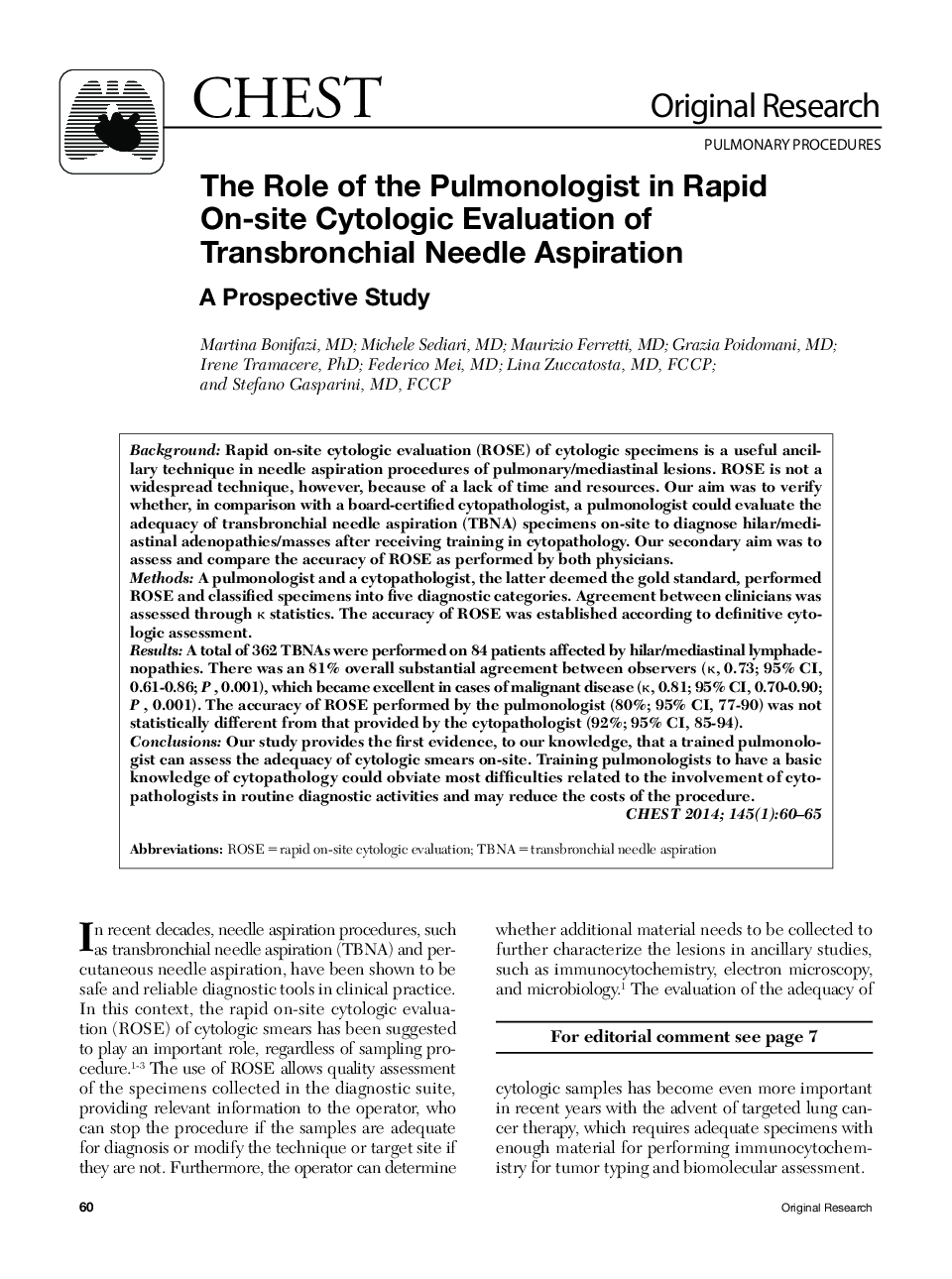| Article ID | Journal | Published Year | Pages | File Type |
|---|---|---|---|---|
| 2900640 | Chest | 2014 | 6 Pages |
BackgroundRapid on-site cytologic evaluation (ROSE) of cytologic specimens is a useful ancillary technique in needle aspiration procedures of pulmonary/mediastinal lesions. ROSE is not a widespread technique, however, because of a lack of time and resources. Our aim was to verify whether, in comparison with a board-certified cytopathologist, a pulmonologist could evaluate the adequacy of transbronchial needle aspiration (TBNA) specimens on-site to diagnose hilar/mediastinal adenopathies/masses after receiving training in cytopathology. Our secondary aim was to assess and compare the accuracy of ROSE as performed by both physicians.MethodsA pulmonologist and a cytopathologist, the latter deemed the gold standard, performed ROSE and classified specimens into five diagnostic categories. Agreement between clinicians was assessed through κ statistics. The accuracy of ROSE was established according to definitive cytologic assessment.ResultsA total of 362 TBNAs were performed on 84 patients affected by hilar/mediastinal lymphadenopathies. There was an 81% overall substantial agreement between observers (κ, 0.73; 95% CI, 0.61-0.86; P, 0.001), which became excellent in cases of malignant disease (κ, 0.81; 95% CI, 0.70-0.90; P, 0.001). The accuracy of ROSE performed by the pulmonologist (80%; 95% CI, 77-90) was not statistically different from that provided by the cytopathologist (92%; 95% CI, 85-94).ConclusionsOur study provides the first evidence, to our knowledge, that a trained pulmonologist can assess the adequacy of cytologic smears on-site. Training pulmonologists to have a basic knowledge of cytopathology could obviate most difficulties related to the involvement of cytopathologists in routine diagnostic activities and may reduce the costs of the procedure.
